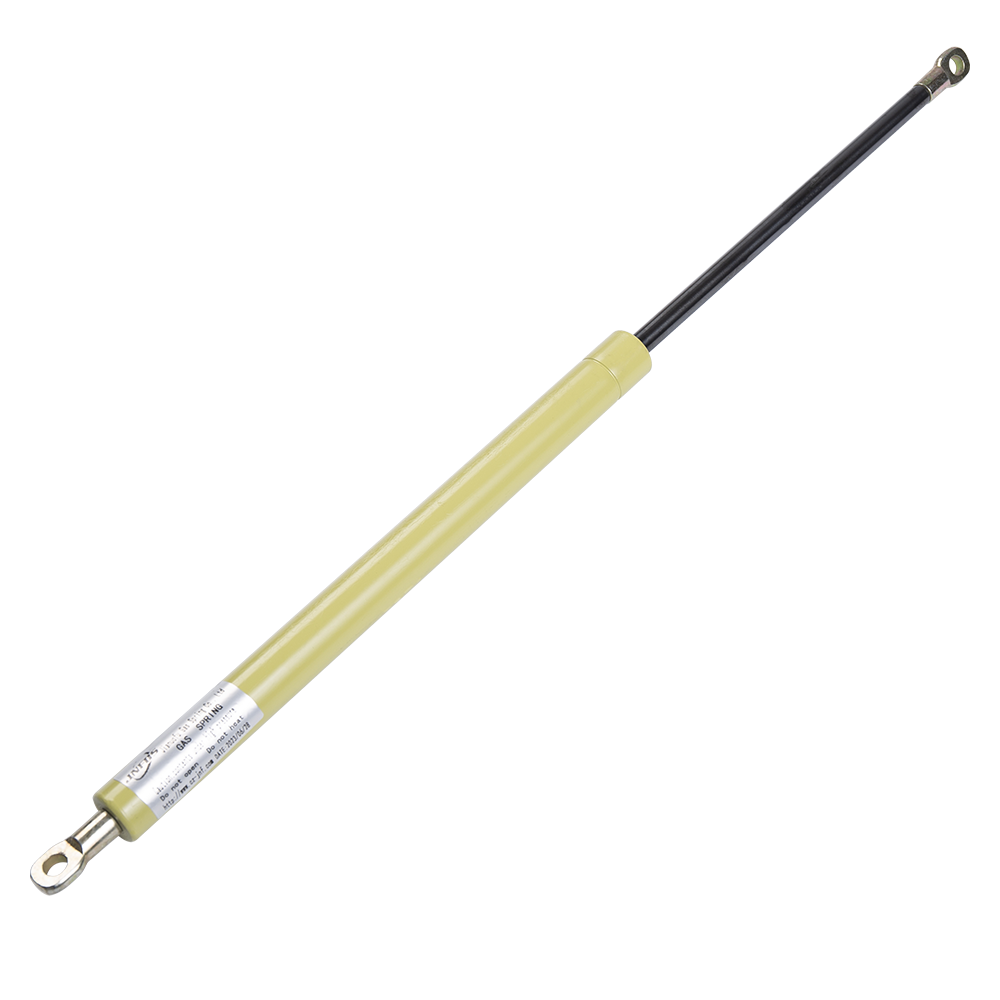Single Piece Gas Springs provide smooth and adjustable thrust or resistance through the interaction between the piston, the gas pressure inside the cylinder, and the mechanical components that control the movement.
A single-piece gas spring consists of three main components:
Outer Cylinder – This is the body that holds the internal components, usually made from high-strength steel.
Piston – A movable component that divides the internal cavity into two chambers. The piston is typically mounted at one end of the gas spring and is responsible for controlling the movement of the gas.
Gas Charge – The space behind the piston is filled with pressurized gas, usually nitrogen, which provides the force needed to move the piston.
The fundamental principle of a gas spring is the use of gas pressure (usually nitrogen) to generate force. This pressure acts on the piston to provide resistance or thrust in a controlled manner. The movement of the piston is the key to how the gas spring provides smooth, adjustable resistance or thrust.
When the gas spring is compressed (e.g., when a heavy object is being lifted), the piston moves within the cylinder, compressing the gas behind it. As the gas is compressed, it resists further compression, creating resistance to the movement. The amount of resistance is determined by the amount of gas pressure and the surface area of the piston. This resistance creates a smooth, controlled movement.
The gas pressure inside the spring is usually fixed during manufacturing, ensuring a constant force over a specific stroke length. As the piston moves, the resistance remains relatively constant, which is ideal for applications where uniform force is needed, such as in automotive seats or adjustable desks.

Some gas springs feature an adjustable valve or a means of changing the internal pressure, allowing for adjustments in the amount of resistance or thrust generated. This is typically done through a valve that regulates the flow of gas between the chambers or a gas inlet/outlet mechanism. By adjusting the amount of gas inside the spring, manufacturers can change how much force the spring provides at different stages of its stroke. This makes the spring adaptable to varying load conditions.
Damping and Smooth Movement: In many applications, single-piece gas springs are designed to provide smooth movement without jerks. This is achieved by including damping mechanisms within the spring, which slow down the movement of the piston as it approaches the end of its stroke. This provides controlled deceleration, preventing sudden stops or impacts. Damping is typically achieved by controlling the rate of gas flow within the cylinder or through specific valve designs.
Thrust Output: The force (thrust) generated by a single-piece gas spring is determined by the amount of gas pressure inside the cylinder, the size of the piston, and the design of the spring. The thrust is typically constant for a given stroke unless the design allows for variable pressure settings. The pressure in the gas spring creates the thrust necessary for moving or lifting loads, and this force can be adjusted depending on the specific needs of the application.
Single-piece gas springs provide smooth and adjustable thrust or resistance primarily through the interaction of gas pressure and the piston. The gas inside the cylinder creates force as the piston moves, resisting or assisting motion depending on whether the spring is being compressed or extended. The design of the gas spring, including its pressure and valve mechanisms, allows for smooth, controlled movement and, in some cases, adjustable resistance or thrust. This makes gas springs ideal for applications requiring precision, safety, and comfort, such as in automotive seat adjustments, furniture recliners, and industrial machinery.


 English
English русский
русский











